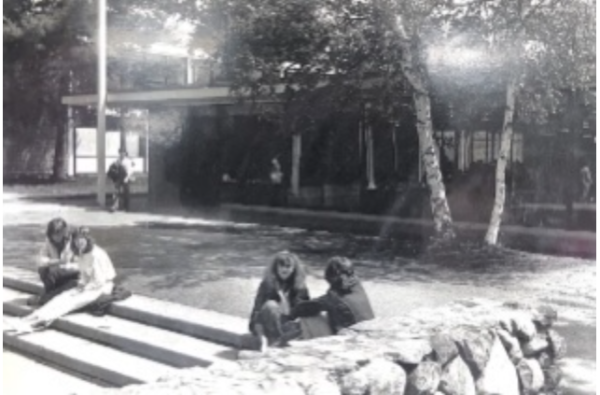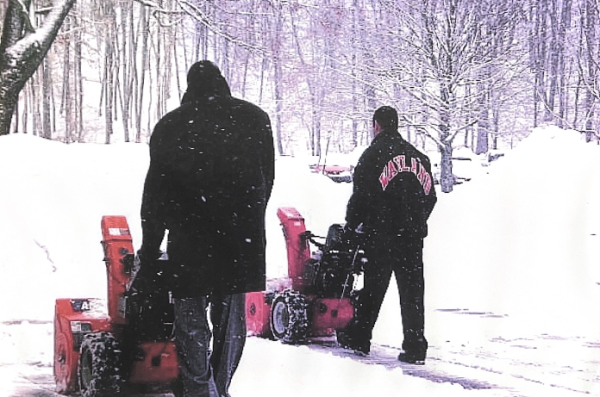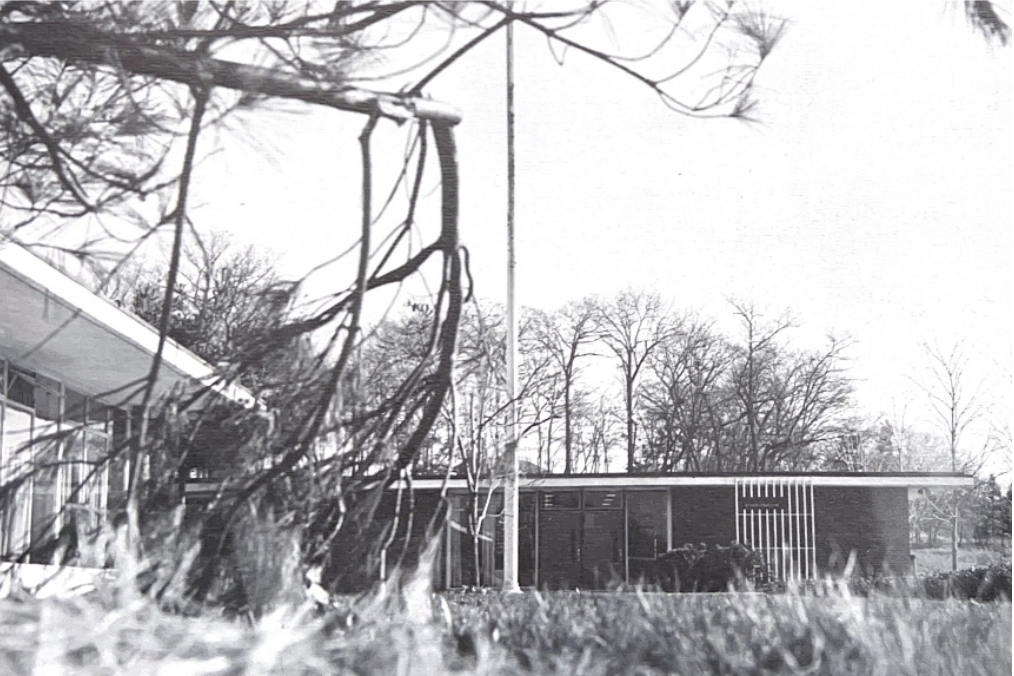The year is 1983. You walk up to Wayland High School and see a large conversation pit in the center of the five separate buildings. Students are sitting on the concrete steps of the pit, eating lunch and socializing with one another underneath the New England sun. This pit was one of the few outdoor social spaces for students before WHS underwent renovation to create the building we see today.
Now, the conversation pit is gone. Students can still socialize and eat outside, but instead of the 70’s style concrete pit, there is a courtyard lined with picnic tables.
WHS has undergone multiple changes throughout the course of its existence. The current plot of land that the high school sits on was formerly known as Schofield Farm, and was purchased by the town of Wayland in 1956. In the fall of 1960, the new WHS opened.

The school was designed by famous architect Walter Gropius, who popularized the modern architectural style called “Bauhaus.” The building was unique compared to other schools in the area. It consisted of multiple buildings that students had to walk between for each of their classes. It was modeled after schools in California, which, according to some students who attended WHS at the time, made the school somewhat impractical for New England weather and its four distinct seasons.
“[In the winter], there was ice that you had to avoid, but it kind of made an adventure,” WHS wellness teacher and former WHS student John Berry said. “I liked being in different buildings [and] traveling outside between classes.”
Wellness teacher Scott Parseghian, who was the Vice Principal at the time, also remembers the impact that New England weather had on him at the old building.

“Me and the principal, now Massachusetts Secretary of Education Pat Tutwiler, [were] out there with snow blowers just getting the school ready,” Parseghian said.
Although the weather was not always optimal for the layout of the school, Parseghian still enjoyed it.
“I didn’t even mind being outside in the weather,” Parseghian said. “It felt good to get outside. I think just getting some fresh air in between classes is good for anybody.”
If the weather was too extreme for people to handle, there were also more protected ways to get from class to class.
“[The buildings] were all connected by an overhang,” Parseghian said. “If [the weather] was really bad, you could [walk underneath them], but it would take a lot longer because you’d have to go through every building to get through it.”
Even with the New England weather, there were teachers who liked the outdoor aspect of the old building’s layout.
“In the old building you would go outside and fresh air would wake you up,” English teacher Gwen Goldin said. “[I enjoyed] the connection with being outside, and the energy [and] rejuvenation that comes with it.”
Although many teachers fondly remember aspects of the old building, they are glad to be in the new building.
“The old building had lived its day,” Goldin said. “Water was coming in. If it rained really heavily, it would come in under doors from outside. The old school was kind of falling apart.”
The old building was also not environmentally friendly, which was an aspect that was greatly taken into consideration during the rebuilding process.
“[The new building] is better for the environment than the original [building was],” Goldin said. “In the old building, we were in and out of buildings all the time. [With] the constant opening of the doors, all the heat would come out both ends of the buildings.”
Not only is the new building more environmentally friendly, another benefit of the new building is that it also has advanced technology. The old school was not nearly as technologically advanced as the one today.
“The technological capabilities in the old school were almost non-existent,” History Department Head David Schmirer said. “Here, we’re literally in a 21st century school. The old buildings were just not set up in a way that would even allow them to be rewired to make modern technology work in them.”
According to Schmirer, the advanced technology in the new building makes a big difference in the teaching process.
“[The new building puts] more creation ability in students’ hands as opposed to just presenting something on the board,” Schmirer said. “It’s improved our teaching and [gives students] access to the internet and everything that it provides.”
The new building marries the old building’s concept of walking outside for some of your classes ,with upgrades in technology for improving learning. Even so, that doesn’t stop teachers from cherishing the old building.
“It was a unique school,” Parseghian said. “There wasn’t anything else like it.”



